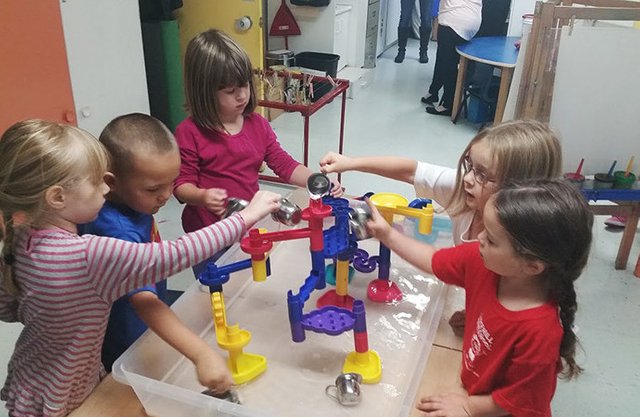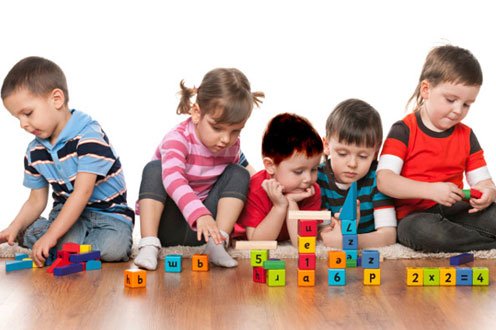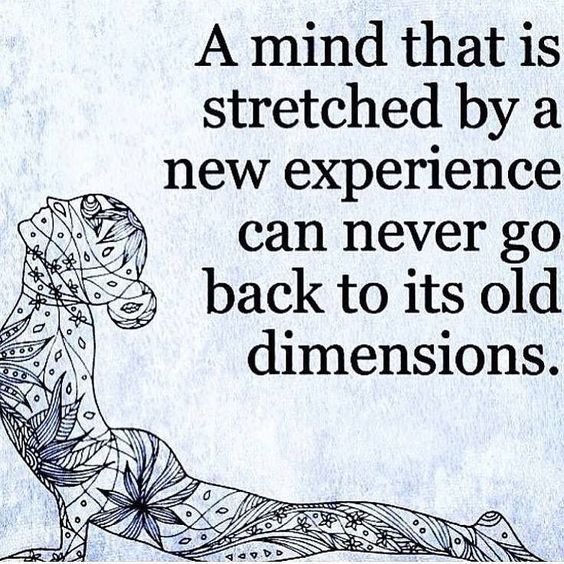Socially conveyed information can be understood by learners which could trigger great learning development

Image Source
A critical methods for securing self-evaluative standards is through perception of models. At the point when children watch modeled standards, they will probably embrace these standards, and model similitude can expand appropriation of standards. Zimmerman and Ringle found that models influenced children's self-efficacy and accomplishment practices.
Children watched an adult model unsuccessfully endeavor to take care of a wire-baffle issue for a long or brief period, the model likewise verbalized articulations of certainty or cynicism. Children who watched a skeptical model hold on for quite a while brought down their self-efficacy judgments for performing great.
Schunk gave children either adult modeling or composed guideline on mathematical division, trailed by guided and self-coordinated practice over sessions. The adult model verbalized division arrangement steps while applying these means to problems.
Both activities upgraded self-efficacy, tirelessness, and accomplishment, yet modeling prompted higher accomplishment and more precise correspondence between self-efficacy and genuine execution. Way investigation demonstrated that modeling improved self-efficacy and accomplishment, self-efficacy straightforwardly influenced constancy and accomplishment, and perseverance raised accomplishment.
Schunk and his partners explored the part of saw similitude in fitness by contrasting dominance and adapting models. Adapting models at first show problems in learning however step by step enhance and pick up certainty. They outline how exertion and positive musings can defeat challenges.

Image Source
Notwithstanding the modeled abilities and techniques, onlookers learn and disguise these motivational convictions and self-regulatory actions. Adapting models difference to dominance models, who exhibit skillful execution all through the modeled arrangement. In the beginning periods of learning, numerous students may see themselves more comparative in ability to adapting models.
Schunk and Hanson had children watch models taking care of subtraction problems. Peer dominance models tackled subtraction problems accurately and verbalized explanations reflecting high efficacy and capacity, low errand trouble, and positive states of mind.
Peer adapting models at first put forth mistakes and verbalized negative expressions, yet then verbalized adapting explanations and in the long run verbalized and executed and also authority models did. In the wake of watching a peer authority model, peer adapting model, adult dominance model, or no model, children got guideline and self-regulated practice over sessions.
Peer dominance and adapting models expanded self-efficacy and accomplishment superior to did adult and no models, adult-model children beat no model students. Schunk, Hanson, and Cox additionally investigated authority adapting contrasts and found that watching peer adapting models upgraded children's self-efficacy and accomplishment more than did watching peer dominance models.

Image Source
Not at all like the Schunk and Hanson examine, this venture utilized fractions - an undertaking at which children beforehand had not been fruitful. Adapting models might be more compelling when students have little undertaking nature or have had past learning challenges.
Schunk additionally found that various peer adapting or dominance models advanced results and in addition completed a single adapting model and superior to completed a single authority model. With different models, learners are adept to see themselves as like no less than one model.
Schunk and Hanson examined self-modeling, or psychological and behavioral changes realized by watching one's own exhibitions. Children were videotaped while taking care of mathematical problems and afterward watched their tapes, after which they occupied with self-regulated practice.
These children showed higher self-efficacy, inspiration, and self-regulated procedure use than did children who had been taped yet did not watch their tapes and children who had not been taped.

Image Source
References:
Influencing Children's Self-Efficacy
Observational Learning and the Effects of Model–Observer Similarity
Peer Models and Children's Behavioral Change
which you say is very true @juvyjabian, learners will more quickly understand and remember what they see from the model of adults. this method is extraordinary, the effect is very great on the progress of learners. thanks for sharing.
Downvoting a post can decrease pending rewards and make it less visible. Common reasons:
Submit